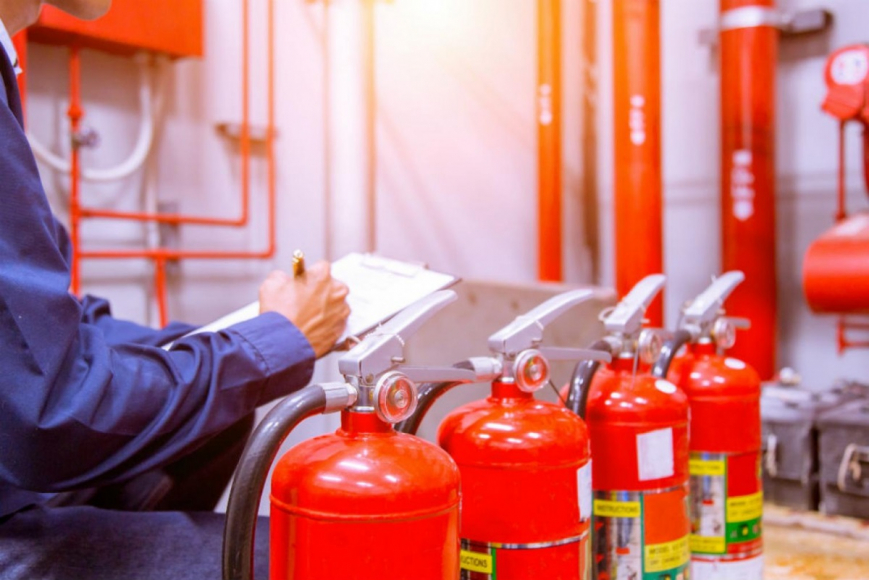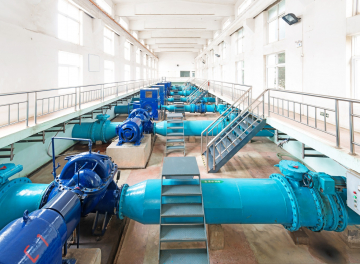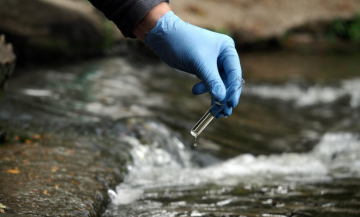Learn why and how oil & gas companies can understand their risks and take action on PFAS contamination from petroleum fires.
State regulatory agencies, local governments, and environmental activist groups are focused on and actively pursuing cleanup of PFAS by industries that manufactured and/or used PFAS-containing products. This is a real and emerging risk not to be taken lightly, and oil and gas companies would do well to take notice.
Fighting Fire with PFAS
One common use for PFAS is in aqueous film forming foams (AFFF), used to fight petroleum fires on military bases, airports, and refineries or storage facilities. Petroleum fires are extremely hazardous, and water alone will actually spread the fire. AFFF, on the other hand, produces a thin aqueous film based on surface tension which spreads across the surface of the fuel, separating the fuel from oxygen, which suppresses vapor and can quickly extinguish a petroleum fire.
Petroleum refineries and bulk storage facilities are required to maintain AFFF by the National Fire Protection Association (NFPA.) NFPA 30, the flammable and combustible liquids code, specifies when routine AFFF testing is required. These capacity tests and time-and-distance calibrations result in the discharge of relatively large volumes of AFFF, whereas actual use on a fire results in very small volumes.
PFAS use in AFFF, as noted in the military specification for fire protection as well as most civilian applications worldwide, includes PFAS as a 3% or a 6% concentrate. Although this may seem low, standards for remedial action regarding PFAS is in the parts per trillion. Therefore, past instances of required testing or active use of AFFF may have resulted in unintended but significant releases of PFAS into the surrounding soil, water sediment, and air.
Understand Your Risk and Take Action
Will the oil and gas industry be held responsible for environmental cleanup of a substance that has not been previously regulated? Likely, yes. Although NFPA Codes require the use of AFFF substances, once used and released into the environment (whether as a result of NFPA routine testing or actual firefighting), oil and gas companies are vulnerable to regulatory actions for assessment and remediation. Over the last two years, twenty-two states have new or pending laws and standards to address PFAS in advance of EPA-planned guidance.
Oil and gas industry best practices for AFFF testing can make a real difference in reducing your risk. This means keeping comprehensive records of the dates of AFFF purchases, the manufacturers’ names, testing and use instances, and the types of AFFF on-hand (including whether they contain pre-2002 long-chain or short-chain PFAS).
Waste minimization and AFFF containment are also important. In a class B petroleum fire, deploy a containment system of the AFFF and be sure to shut off stormwater discharge outfall valves or install covers. Initiate cleanup of AFFF as soon as safely possible following a fire to reduce the potential for spreading and offsite migration and, if possible, consider using a substitute for AFFF when training. An internal or third-party audit may also be helpful to avoid getting blindsided and to understand and manage any challenges proactively.
Our experts can help you ensure you have appropriate PFAS planning and protocols in place. Contact us today to learn more about PFAS management support.
Download PFAS Whitepaper
This whitepaper provides readers with an overview of the wide range of manufactured products that contain PFAS and highlights some of the latest regulatory requirements for sampling, investigation, and discovery of PFAS compounds.
Download HereWant more news and insights like this?
Sign up for our monthly e-newsletter, The New Leaf. Our goal is to keep you updated, educated and even a bit entertained as it relates to all things EHS and sustainability.
Get e-NewsletterHave any questions?
Contact us to discuss your environment, health, safety and sustainability needs today.






